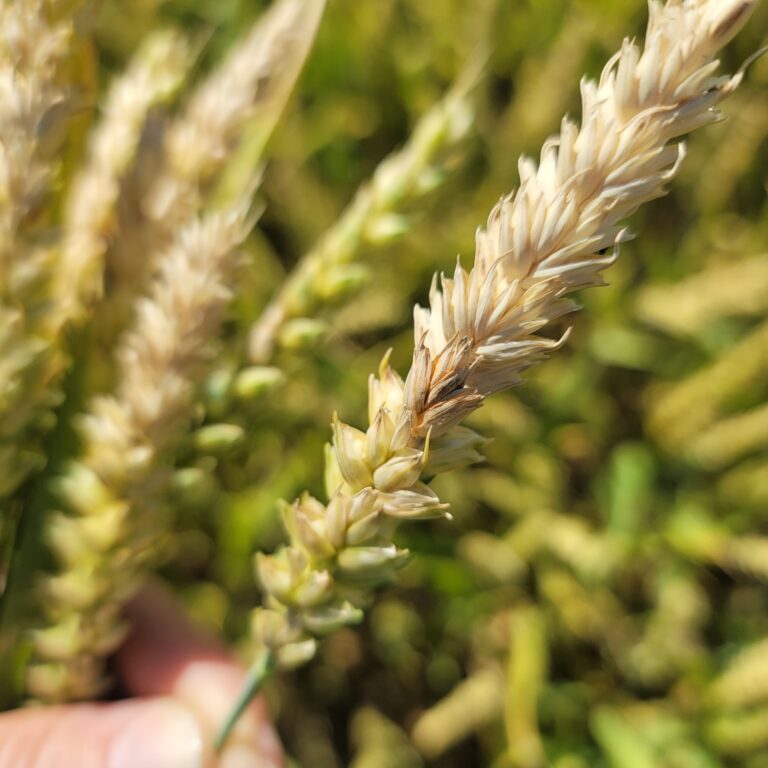Fusarium graminearum is a globally distributed plant pathogen capable of causing plant diseases, Fusarium head blight of wheat and small grains and Gibberella ear rot of corn are two diseases found in Indiana that are caused by this plant pathogen. Under conditions that are favorable for disease, such as warm and wet conditions, the disease can significantly impact yield and grain quality. The fungus can produce toxins referred to as vomitoxin, that can induce vomiting. However, farmers actively manage diseases to reduce this threat, and harvested grain is routinely tested for the toxin. Indiana growers should review the article from last week on tips for scouting and things to consider for Fusarium head blight in wheat as our crop reaches maturity (https://extension.entm.purdue.edu/newsletters/pestandcrop/article/scouting-for-fusarium-head-blight-scab-of-wheat-and-things-to-consider-when-harvesting/ ).
Occasionally it is helpful to import strains of the fungus from other states or parts of the world to improve our understanding of the system and to further plant disease management. However, there are regulations and procedures in place that are managed by the Animal and Plant Health Inspection Service (APHIS) agency within the United States Department of Agriculture. Those procedures assess the potential threat of the import request and have strict protocols in place to prevent accidental release of potentially dangerous strains.
The recent media attention provides a valuable opportunity to highlight the ongoing efforts of our universities, government agencies, private industry and farmers who work collaboratively to protect our crops and ensure a safe, reliable food supply.
An excellent article with more detail on Fusarium graminearum is available here at the Crop Protection Network: https://cropprotectionnetwork.org/publications/an-overview-of-fusarium-head-blight .
This article was written by Darcy Telenko1 and Martin Chilvers2
1Associate Professor of Plant Pathology and Extension Specialist, Department of Botany and Plant Pathology, Purdue University. 2Professor of Plant Pathology and Extension Specialist, Department of Plant, Soil and Microbial Sciences, Michigan State University
